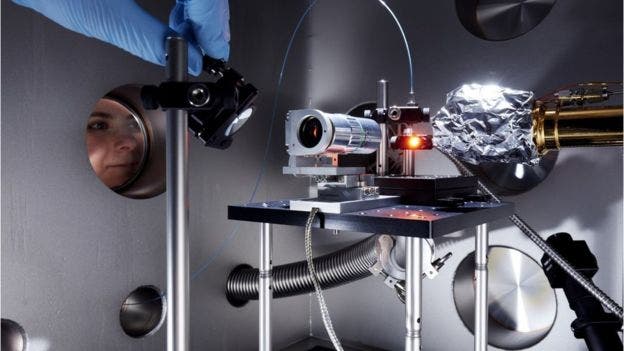The enormous facility, which cost over one billion euros, will be used to study matter atom by atom.
A bigger X

In 1895, German physicist Wilhelm Röntgen identified a new type of electromagnetic radiation. It was so bizarre he called it an X-ray, because so many things about them were unknown (X). Unbeknownst to him, he was laying the foundation for a revolution in medicine. As is so often the case, the ripples sent by scientific progress are far reaching and few people — if any — would have guessed how important X-rays would become in modern life. Now, researchers are pushing the limits of the technology even further.
European X-ray Free Electron Laser (XFEL) will offer unprecedented power, allowing researchers to use X-rays to see how chemical bonds form or break. Just like Röntgen’s initial work, researchers expect new findings which will eventually pass on to medicine, opening new avenues for diagnosis and treatment. Up to 2010, over 5 billion X-ray scans have been performed in hospitals around the world.
Prof Robert Feidenhans’l is the MD of the non-profit company established to run the facility. He was thrilled to announce the start of the project.
“It’s a fantastic and exciting day for us to open the European XFEL for operation after more than eight years of construction,” he stated during the inauguration ceremony. “I now declare we are ready to take data; we are ready to meet the challenge of getting groundbreaking results.”
More than medicine

The concept of the laser is not innovative — many research facilities run similar machines, called synchrotrons. However, the XFEL is about a billion times stronger than the average synchrotron. It’s the biggest and most powerful source of X-rays ever made, says Olivier Napoly, a member of the French Atomic Energy Commission who helped build the complex. The required energy will be provided via a 1.7 kilometres (one mile) superconducting linear accelerator.
But it’s not just about the power. XFEL has another particularity: the super-fast time structure in its flashes. It can deliver trillions (1,000,000,000,000) of X-ray photons in a pulse lasting just 50 femtoseconds (0.000,000,000,000,05 sec), and it can repeat this process 27,000 times a second. This will offer an unprecedented view into small-scale processes, such as the making and breaking of chemical bonds. The wavelength of the x-ray laser may be varied from 0.05 to 4.7 nanometers, enabling measurements at the atomic length scale. Researchers are especially interested in studying biological molecules, something which has proven notoriously difficult.
“The huge hope for XFEL is that we will be able to do single particle imaging. So, you just put a stream of your protein complex or virus into the beam and you’d have enough photons that an individual biological entity would scatter those photons for you to get the shape of it,” explained Oxford University’s Prof Elspeth Garman, who sits on the committee that will allocate scientists experimental time in Hamburg.
Although the facility is just starting its operation, researchers are already working on replacement parts for it. The XFEL’s high-energy beam is so intense it actually destroys the samples, so it’s expected that the camera recording the process will also degrade in time.
But as good as XFEL is, it won’t reign supreme for long. The United States Department of Energy National Laboratory is already working on a similar laser, part of the SLAC National Accelerator Laboratory project. Operated by Stanford University, SLAC’s X-ray laser will be able to fire one million times per second.


